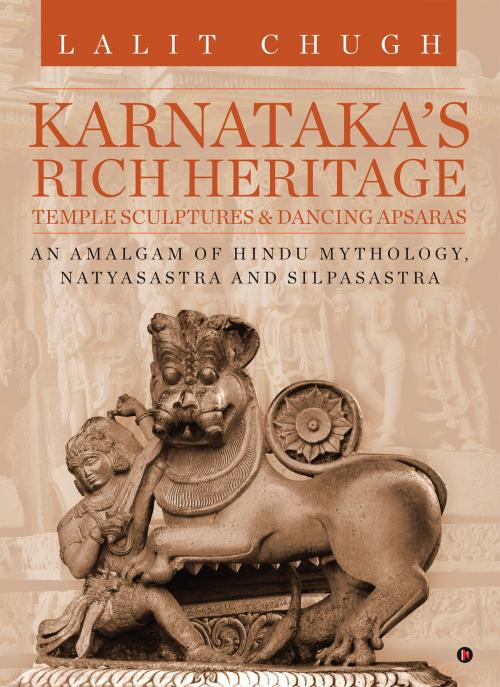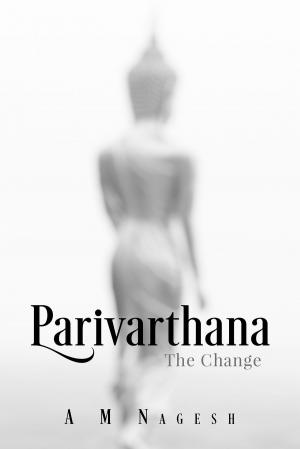Karnataka's Rich Heritage Temple Sculptures & Dancing Apsaras
An Amalgam of Hindu Mythology, Natyasastra and Silpasastra
Nonfiction, Art & Architecture, Architecture, History| Author: | Lalit Chugh | ISBN: | 9781947137363 |
| Publisher: | Notion Press | Publication: | May 23, 2017 |
| Imprint: | Notion Press | Language: | English |
| Author: | Lalit Chugh |
| ISBN: | 9781947137363 |
| Publisher: | Notion Press |
| Publication: | May 23, 2017 |
| Imprint: | Notion Press |
| Language: | English |
Nataraja, the dancing Siva sculpture, is perhaps the most well-known among all Hindu sculptures, and rightly so. It has evoked highly advanced discussions among scientists, philosophers, performing artists, art critics, art collectors, historians, archaeologists and mythologists. The Nataraja sculpture also occupies a pride of a place at CERN, the European Centre for Research in Particle Physics in Geneva.
Siva, according to Hindu Mythology, was the very first dancer in the world. All dramaturgy and dance traditions emerge from Siva’s cosmic dance. Tandu, Siva’s disciple narrated the description of Siva’s dance to Bharata Muni and he is believed to have compiled the Natyasastra, the world’s first treatise on dramaturgy, dance and other performing arts. Scholars believe that the Natyasastra was written over a long period of time between the 2nd century BCE and 2nd century CE with contributions from various sages, with its foundation having been laid by Bharata Muni.
Convergence between Hindu mythology, Natyasastra and Silpasastra was the natural outcome. Karnataka, and its temple architecture tradition, played a pioneering role in giving an artistic form to this convergence in its temple sculptures. Though this trend may have started earlier during 2nd and 3rd century CE, it started to take the center stage from the times of the Badami Chalukyas. Passing through various refinements between 5th and 10th centuries, it reached its peak with the Hoysala art. This book traces the history of temple sculpture evolution and development through the centuries by referring to the existing sculptural forms and the canonical literature that developed over time.
Siva, according to Hindu Mythology, was the very first dancer in the world. All dramaturgy and dance traditions emerge from Siva’s cosmic dance. Tandu, Siva’s disciple narrated the description of Siva’s dance to Bharata Muni and he is believed to have compiled the Natyasastra, the world’s first treatise on dramaturgy, dance and other performing arts. Scholars believe that the Natyasastra was written over a long period of time between the 2nd century BCE and 2nd century CE with contributions from various sages, with its foundation having been laid by Bharata Muni.
Convergence between Hindu mythology, Natyasastra and Silpasastra was the natural outcome. Karnataka, and its temple architecture tradition, played a pioneering role in giving an artistic form to this convergence in its temple sculptures. Though this trend may have started earlier during 2nd and 3rd century CE, it started to take the center stage from the times of the Badami Chalukyas. Passing through various refinements between 5th and 10th centuries, it reached its peak with the Hoysala art. This book traces the history of temple sculpture evolution and development through the centuries by referring to the existing sculptural forms and the canonical literature that developed over time.
Nataraja, the dancing Siva sculpture, is perhaps the most well-known among all Hindu sculptures, and rightly so. It has evoked highly advanced discussions among scientists, philosophers, performing artists, art critics, art collectors, historians, archaeologists and mythologists. The Nataraja sculpture also occupies a pride of a place at CERN, the European Centre for Research in Particle Physics in Geneva.
Siva, according to Hindu Mythology, was the very first dancer in the world. All dramaturgy and dance traditions emerge from Siva’s cosmic dance. Tandu, Siva’s disciple narrated the description of Siva’s dance to Bharata Muni and he is believed to have compiled the Natyasastra, the world’s first treatise on dramaturgy, dance and other performing arts. Scholars believe that the Natyasastra was written over a long period of time between the 2nd century BCE and 2nd century CE with contributions from various sages, with its foundation having been laid by Bharata Muni.
Convergence between Hindu mythology, Natyasastra and Silpasastra was the natural outcome. Karnataka, and its temple architecture tradition, played a pioneering role in giving an artistic form to this convergence in its temple sculptures. Though this trend may have started earlier during 2nd and 3rd century CE, it started to take the center stage from the times of the Badami Chalukyas. Passing through various refinements between 5th and 10th centuries, it reached its peak with the Hoysala art. This book traces the history of temple sculpture evolution and development through the centuries by referring to the existing sculptural forms and the canonical literature that developed over time.
Siva, according to Hindu Mythology, was the very first dancer in the world. All dramaturgy and dance traditions emerge from Siva’s cosmic dance. Tandu, Siva’s disciple narrated the description of Siva’s dance to Bharata Muni and he is believed to have compiled the Natyasastra, the world’s first treatise on dramaturgy, dance and other performing arts. Scholars believe that the Natyasastra was written over a long period of time between the 2nd century BCE and 2nd century CE with contributions from various sages, with its foundation having been laid by Bharata Muni.
Convergence between Hindu mythology, Natyasastra and Silpasastra was the natural outcome. Karnataka, and its temple architecture tradition, played a pioneering role in giving an artistic form to this convergence in its temple sculptures. Though this trend may have started earlier during 2nd and 3rd century CE, it started to take the center stage from the times of the Badami Chalukyas. Passing through various refinements between 5th and 10th centuries, it reached its peak with the Hoysala art. This book traces the history of temple sculpture evolution and development through the centuries by referring to the existing sculptural forms and the canonical literature that developed over time.















